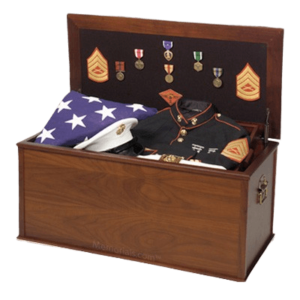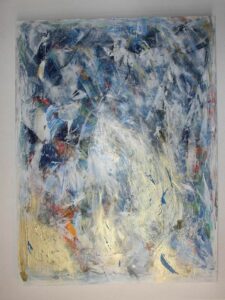What is my Family Going to Do with my Cremation Urn After I Die?
Cremation urns today are often bought, sold and even made with the idea that they will become a family heirloom. They are crafted with artistic care and quality so that generations of a person’s descendants can share and appreciate the great memories of their loved one’s life on earth. But the question arises: what is a family to do with ashes that are, say, hundreds of years old. It is rare that a person can maintain a deep emotional bond with a relative who had long been deceased even before his or her very birth. Given that, are descendants obligated to continue treasuring an urn for centuries as they might an antique piece of furniture or an old family portrait? This article looks at that interesting, but little-discussed, question in some depth.
The answer is inconclusive

Searching the internet for stories that shed some light on this question is a frustrating quest. An hour’s exploration yields not one story of what a family has decided to do with an urn filled with a descendant’s antique ashes. So an answer to this question, based on common experience and tradition, is not immediately forthcoming. This will, perhaps, change with time, as more and more families find themselves in this potentially awkward dilemma of feeling called, duty-wise, to be a protector of history but having little emotional involvement in the matter.
For now, it’s apparent, the question simply does not come up very often: anecdotal evidence indicates that the vast majority of cremation ashes are either scattered, buried, or tucked away in a columbarium niche within a few months (or, at the latest, a few years) after a death. And this is usually at the desire of the deceased. It is doubtful that many people relish the thought, in life, of becoming a permanent house guest, subject to weekly dusting, upon the mantel of his or her great-great-great-great grandchild.
The fact is, however, that time has simply not yet told. The first modern cremations, which spawned the advent of modern cremation urns, did not occur until the late 19th century. And even then, cremations were relatively rare until about the 1960’s. So, in most cases, if an urn filled with ashes remains on display in a family home, its contents are likely still considered a treasured heirloom. It is likely that the deceased inside played at least some real-life role in the lives of all but the very youngest of a family. As the future generations come of age and begin to make decisions about the antique earns in their families, perhaps, those who struggle with this question will be able to glean some guidance out of the common trends that will certainly develop.
In the meantime, this article will simply focus on the many options for disposal of ashes that remain practically available at just about any time – even centuries – after a death.
Scattering is most common
Scattering ashes seems, by far, the most popular tradition for families to follow. The stereo typical urn upon a mantel would probably be found to be quite rare if any social scientist were to care to conduct a formal study on this matter (to our knowledge such a study has never been done).
One of the advantages of cremation is that scattering can happen at any time. So, if a young couple in 2075 finds itself the heir to some ashes of a relative who died in 1962, the two certainly have the option of scattering the ashes at that time. There is currently know law against scattering cremation ashes at any time, even against the written wishes of the deceased, and it seems unlikely that lawmakers, barring a dramatically Draconian turn of democracy, would make such a rule in the future.
So, depending upon the rituals and traditions of an individual family, a cremation urn can always be emptied over some special place, even centuries after a death. Familes now, and eventually then, even have the option of placing the remains in a biodegradable urn that could be part of a formal memorial service for scattering the remains.
Other options such as burial and columbarium
The same is true, of course, of burial and entombment in a columbarium niche. These options will always be open to those who inherit possession of a family member’s cremation urn and, while they will likely be more expensive than simply scattering the urns contents to the wind, they may be the perfect choice for honoring a family’s legacy. Unlike scattering, of course, these options provide a specific place at which historians, and even archeologists, can be assured a record of a person’s life.
Unique ideas for creating an heirloom

If the idea of a cremation urn on display in a home turns stale after a few decades, there are also many other options available these days for turning ashes into even other types of heirlooms. Many companies operating in today’s memorial products industry offer intriguing products – which have even caught the attention of major news outlets in recent years – by which cremation ashes are incorporated into timeless art. This cremation art can come in a variety of different mediums and styles. One company will add a tiny amount of ashes to a beautiful, abstract painting that can be passed down for generations (and, because it is abstract, will be unlikely to go out of style in later generations). Another will incorporate a tiny portion of the ashes into hand blown glass ornaments, and still another can use its patented process to turn the ashes into beautiful, actual diamonds. Glass ash keepsakes are amoung the most popular forms of ash art, as the keepsakes are smaller and can usually fit into anyone’s choice of home decor.
And, perhaps the most famous story of turning cremation ashes into a real heirloom is that of actress Jill Ireland, wife of actor Charles Bronson. Upon her death, Bronson ordered her cremation ashes be made into a walking cane that he would use for the rest of his life. While this is the kind of heirloom that might otherwise find its way into a museum of some sort upon Bronson’s own death, he requested it be buried along with him. And it would seem that this is the sort of thing that his own descendants, decades from now, might decide is worth exhuming his body to receive for posterity.
So, the bottom line is this: if you are concerned about your family’s plans for a cremation urn that has, through the decades, become a historical, or genealogical, artifact as an heirloom, just remember that, as of this writing, there is no right or wrong way to handle the situation. And there might never be.
